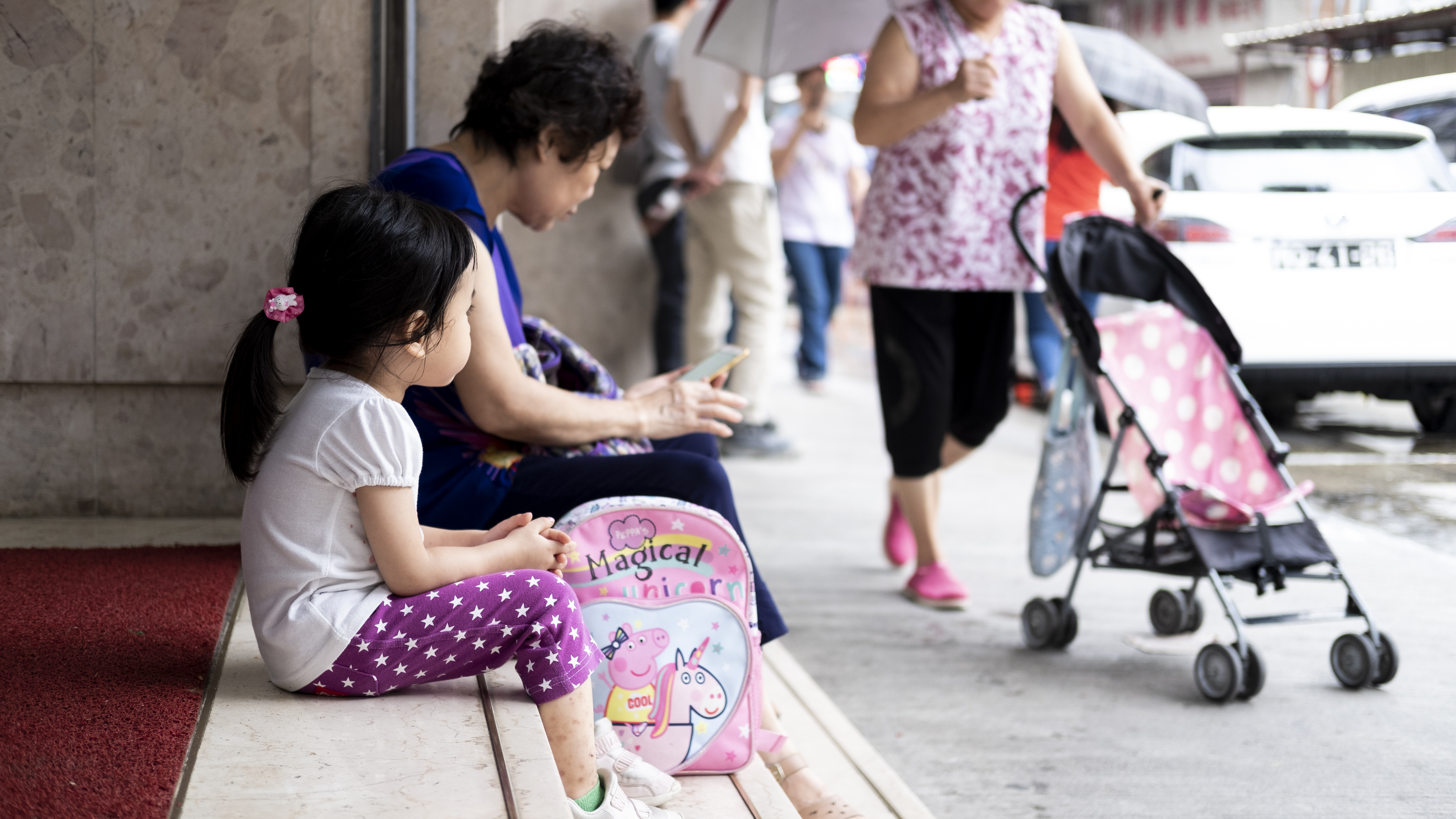
After school moment, Macao SAR. / Photo courtesy of Pedro Benjamim
After school moment, Macao SAR. / Photo courtesy of Pedro Benjamim
In the two decades since Macao's return to the motherland, investment in education and health systems has grown systematically. Supported by additional social benefit programs, the focus on people's livelihood has been at the core of the Macao SAR government's policies for 20 years.
Ten years after the return to the motherland, by the end of Chief Executive Edmund Ho's mandate, the top three areas of the local budget were: public expenses in health (2.44 billion patacas/303 million U.S. dollars), education and youth (2.1 billion patacas/261 million U.S. dollars), and social security (2.3 million patacas/286 thousand U.S. dollars).
This structure hasn't changed much since then. Last November, in an assessment of his two mandates, Chief Executive Chui Sai On stressed the investment made exactly in those areas. From 2009 to 2018, government expenses in education rose 166 percent, in the health system 159.7 percent, and in the social security system, they tripled.
To CGTN Digital, Jose Luis de Sales Marques, president of the Institute of European Studies of Macau (IEEM), noted that the investment in all three areas has been significant, but the health system still faces challenges derived from old medical installations.
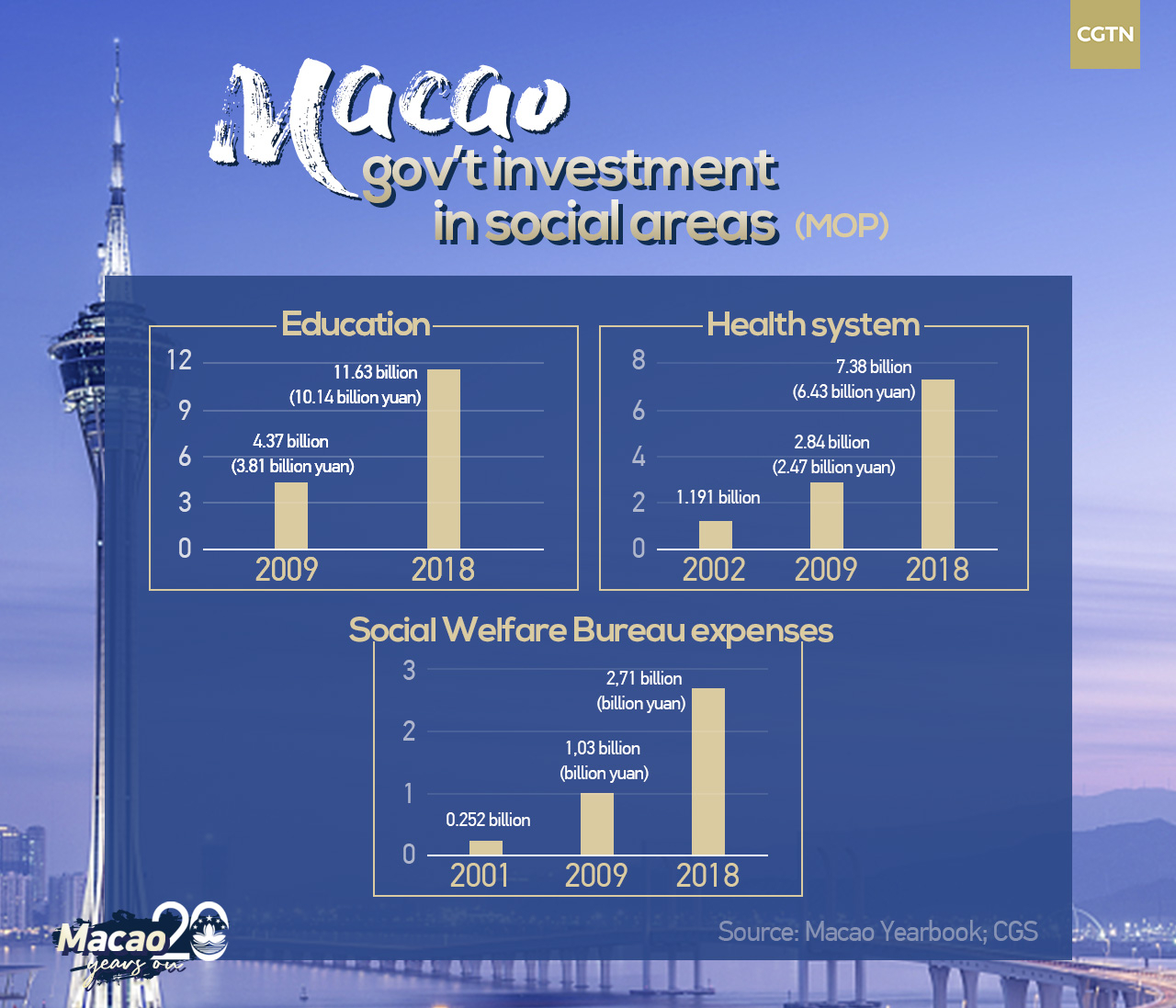
Education – improving the student/teacher relationship
Macao is the first region in China to provide 15 years of free education.
In 2001, the SAR government channeled 389 million patacas (339 million yuan) to the free education program for private institutions and started curriculum reform. In 2018, the free education system covered 94 percent of schools, only seven are paid.
Between 2001 and 2019, the number of schools decreased from 113 to 70. The number of students registered followed the same pattern, declining from 96,177 to 79,450 in the 2018/2019 academic year. This didn't equal less investment, and areas like special and inclusive education have been in focus.
This educational bet is showing results. According to the Education and Youth Affairs Bureau, Macao's 15-year-old students ranked third in the PISA (Program for International Student Assessment) 2018 organized by OECD (Organization for Economic Cooperation and Development) with 600,00 students from 42 partner countries/economies.
Local students are well above the OECD average in all three core literacies: reading (525), mathematics (558) and science (544). These are the best results ever since they first started participating in 2003, showing high academic quality and fast educational progress over the past decade, said OECD.
"There has been an increase in quality. The PISA results show exactly that. This happens not only because of the investment made but also to the government's concern in creating an educational framework focused on the relation between teacher and student and balancing the teacher/student ratio by giving incentives to the schools," said Sales Marques.
Departments are also focused on humanizing and modernizing traditional teaching methods based on repetition and in which the relationship between students and teachers is distanced.
Classrooms were improved, and there was an investment in the construction and renovation of the hardware, he noted.
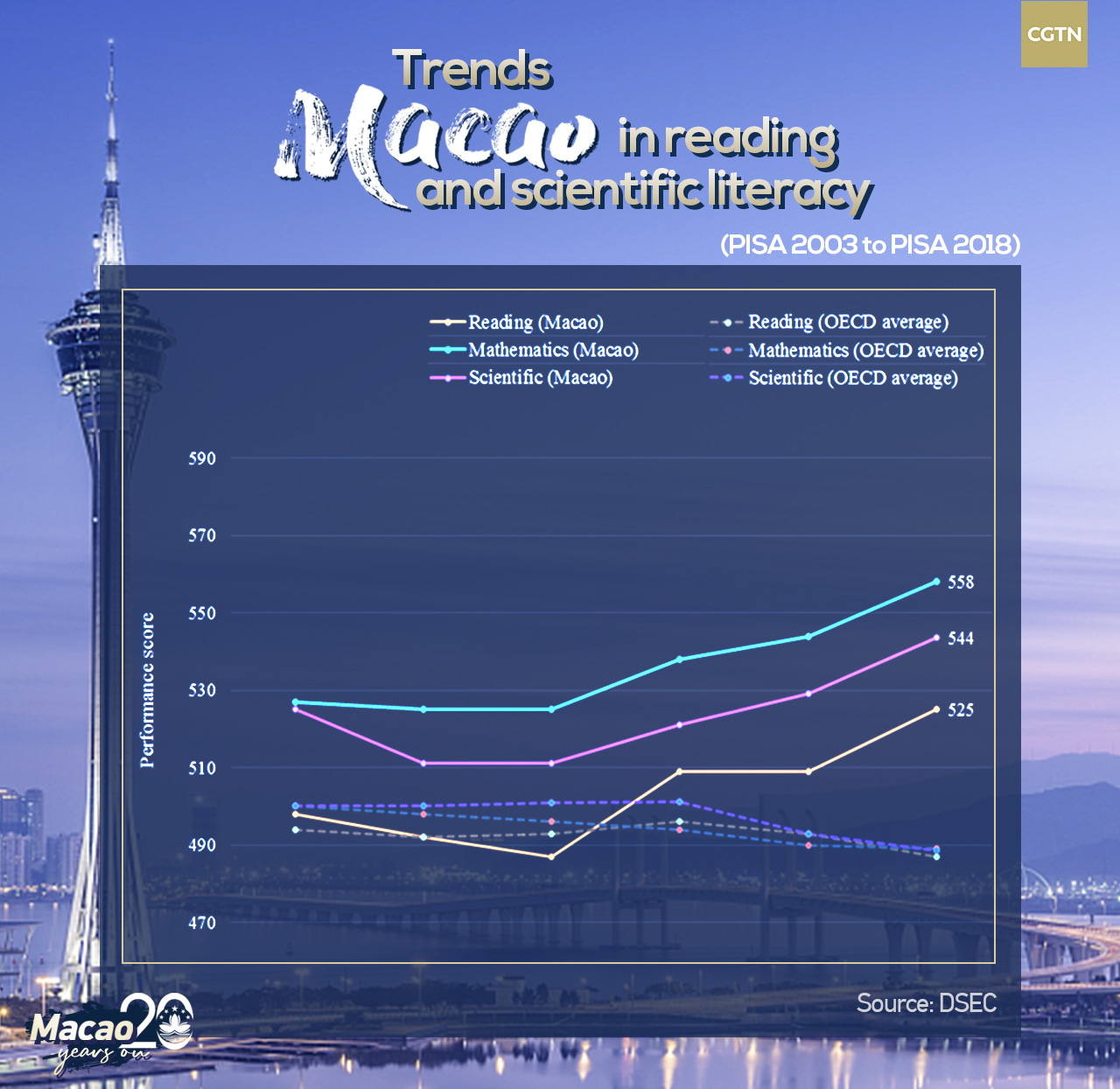
At the university level, institutions flourished. Even though there is just one more university compared to 1999/2000, 10 in total, they saw a drastic increase in the number of registered students from 7,527 to 34,279 in 2018/2019 school year.
In 2018, the Higher Education Fund was created with an initial investment of 300 million patacas (261 million yuan). There is also a unified entrance exam to the universities.
In 20 years, the local government invested strongly in the development of the Portuguese language in the region, due to its objective of becoming the platform between China and the Portuguese speaking countries, which represent a market of 291.4 million people and 147.3 billion U.S. dollars in trade. Macao is becoming the center for education and training in this language across Asia.
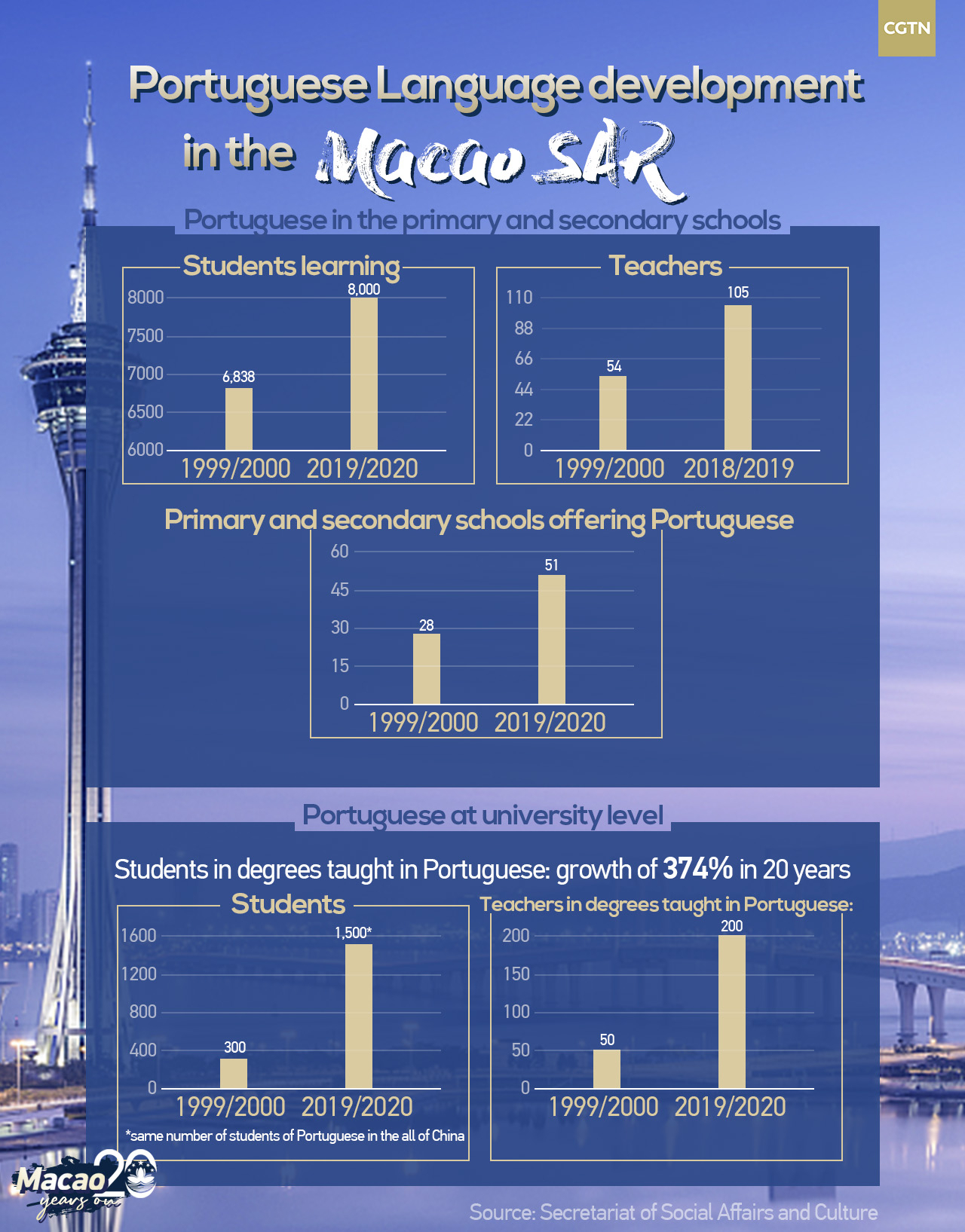
Social benefits – future in the balance
The Social Welfare Bureau invested more than 180 million patacas (157 million yuan) in social services in 2001 and after that, the tendency has been upwards.
The government created a personal account for every eligible permanent resident of the Macao SAR in the Provident Fund Personal Accounts with an initial 10,000 patacas (8,724 yuan) allowance and 7,000 patacas (6,107 yuan) money injections from the fiscal surplus.
There are also health care vouchers, 6,000 patacas (5,234 yuan) vouchers for continuing education; tuition fees subsidies, textbook allowances, unemployment subsidies, subventions for individuals and families, for senior residents, for the disabled, and so on.
In 2008, the Wealth Partaking Scheme was created, offering cash disbursement to permanent and non-permanent residents aimed at sharing the results of the economic development and to help mitigate the effects of inflation.

Sales Marques considers that the investment in the social security system has been significant, especially in the last 10 years, during Chui Sai On's mandate. "This reflects the government's worry in raising social support monetarily but also the response to the increasing number of people in the territory. There is also an aging population to take into account and think about in the future."
In recent years, the idea of creating elderly homes in the Great Bay Area for Macao residents has been discussed, but the academic considers that this plan needs to be well thought.
"We will see how this chapter develops; there are some aspects that need to be taken into account," said Sales Marques. For example, moving the elderly to other cities and away from their hometown might increase emotional problems and loneliness. "There needs to be a balance. It's more than money."
Health – new hospital is the necessary 'jump'
There is no denying that the obvious economic growth in Macao requires foreign workers and has transformed the city into a desired destination for potential migrants. The total population increased from 434,700 to 676,100 and the number of non-resident workers jumped from 28,011 to 188,480, an almost seven-fold increase from 2000.
Besides the growing population, there is also an ageing population to consider. These factors create extra stress factors in the local health system, that by 2000 was already free for local residents.
Even though there is an increase in the number of patients looking for health services. There is also an increase in the ability to respond to those issues. But, it doesn't mean it's enough.
"Health is a more complex theme because, on the one hand, the government has been investing, but on the other hand there is an insufficiency that needs to be overcome quickly: the lack of a new central hospital," noted Sales Marques.
The old hospital installations are a problem, as they don't meet current needs. "Basically, the system is not as good as it could be. Besides, sometimes it is hard to recruit medical staff," he added.
"Macao needs a great jump in terms of public medical installations," he said, adding that risk groups are well taken care of, and the public system really worries about them.
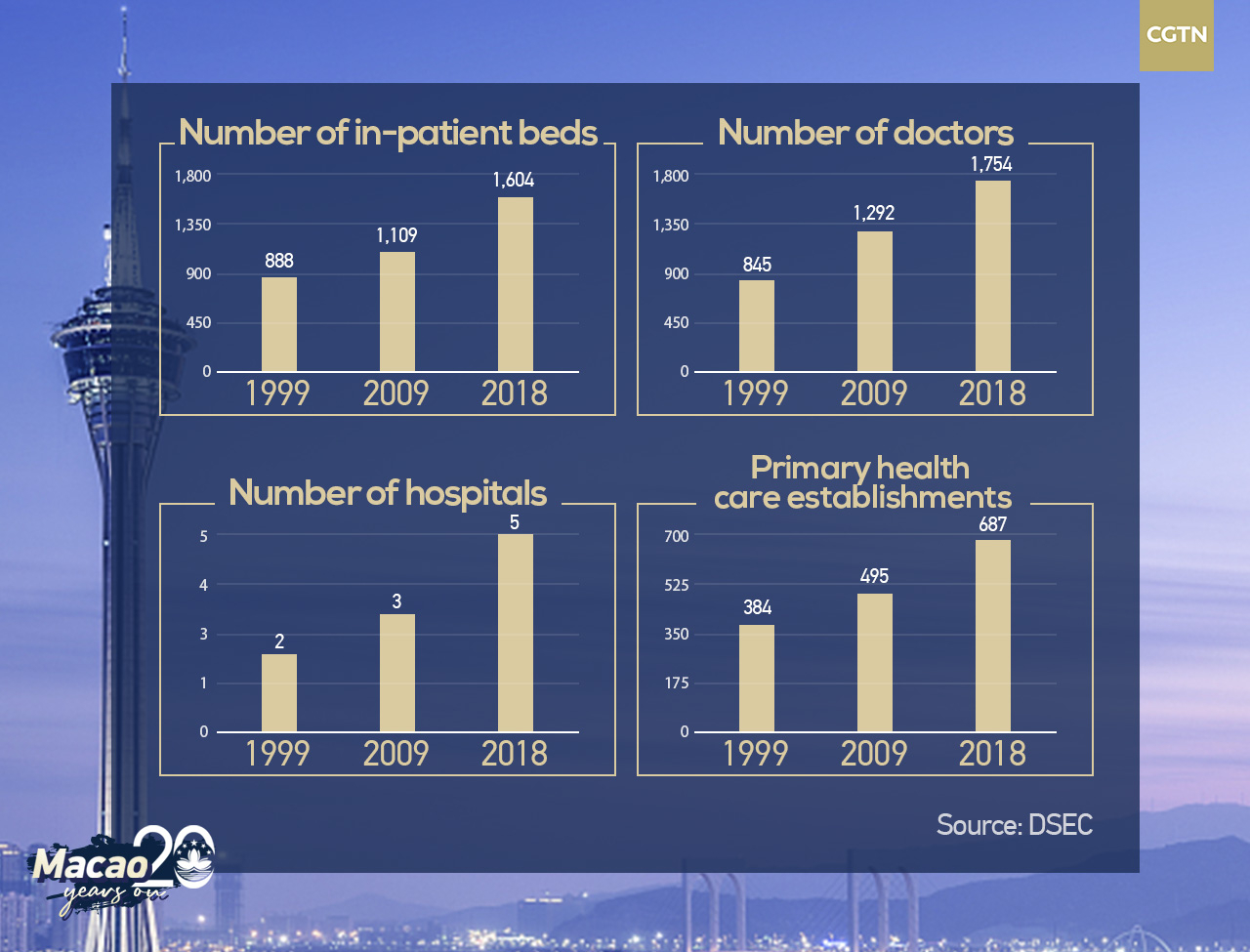
The future Islands District Medical Complex could help in this regard. But it's still far away from becoming a reality. The complex will include the Nursing Institute, Central Lab, Rehabilitation Hospital, residential building for workers and oncology center.
In this huge project, like many others that suffer from significant delays, only the Nursing Institute building was concluded this October. Until the end of 2017, the complex construction had already costed two billion patacas (248 million U.S. dollars), including all the foundations.
According to Follow-up Committee on Public Works, the complex main buildings should be ready by mid-2022, beginning operations by 2024.
The budget for the public health system in 2001 was 1.1 billion patacas (136.8 million U.S. dollars) and can reach at least 8 billion patacas (995 million U.S. dollars) this year.
01:09
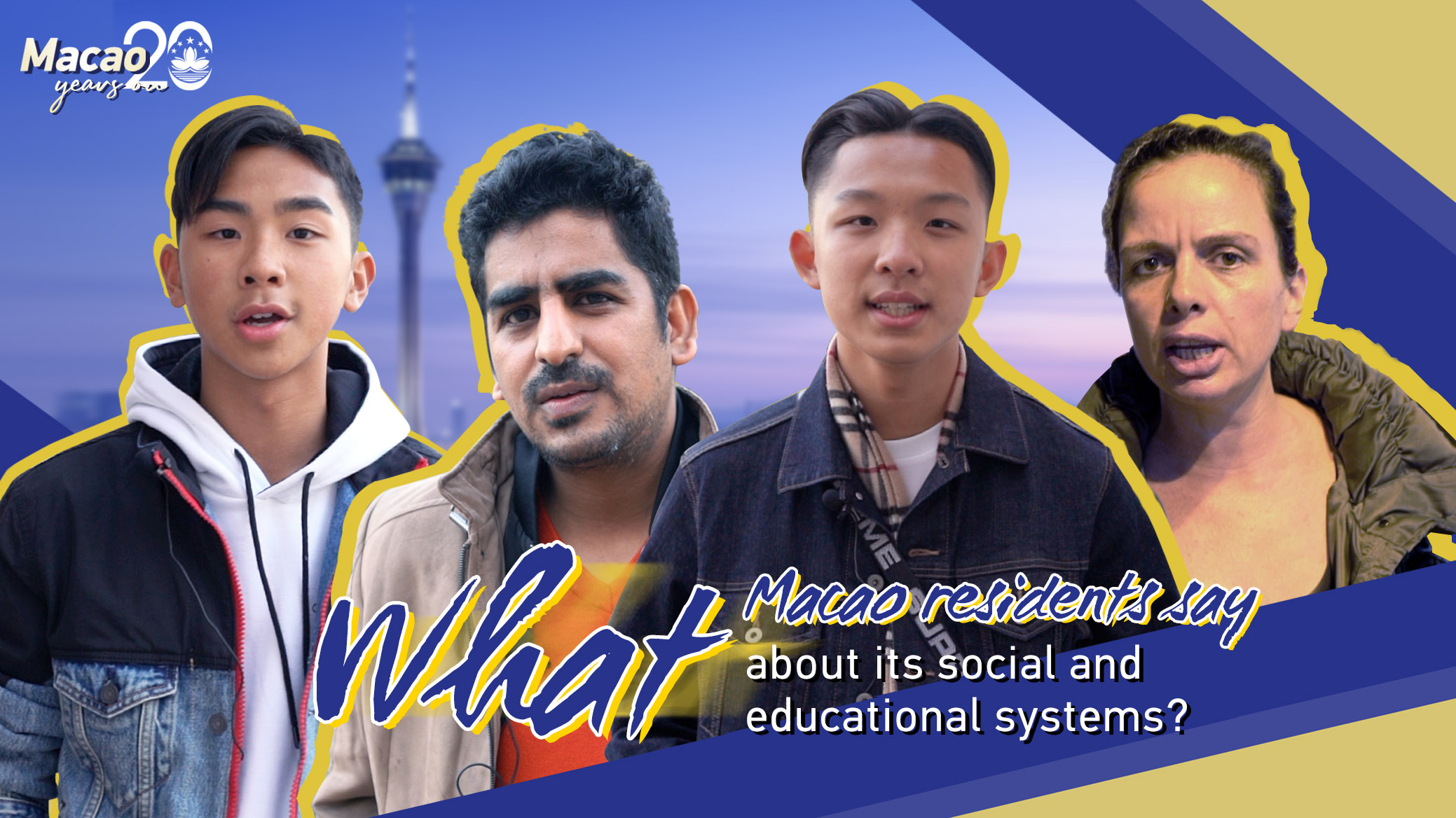
(Cover: Photo courtesy of Pedro Benjamim)
Video editor: Wang Yueer
Graphics: Yin Yating
Coordinator: Liu Hui